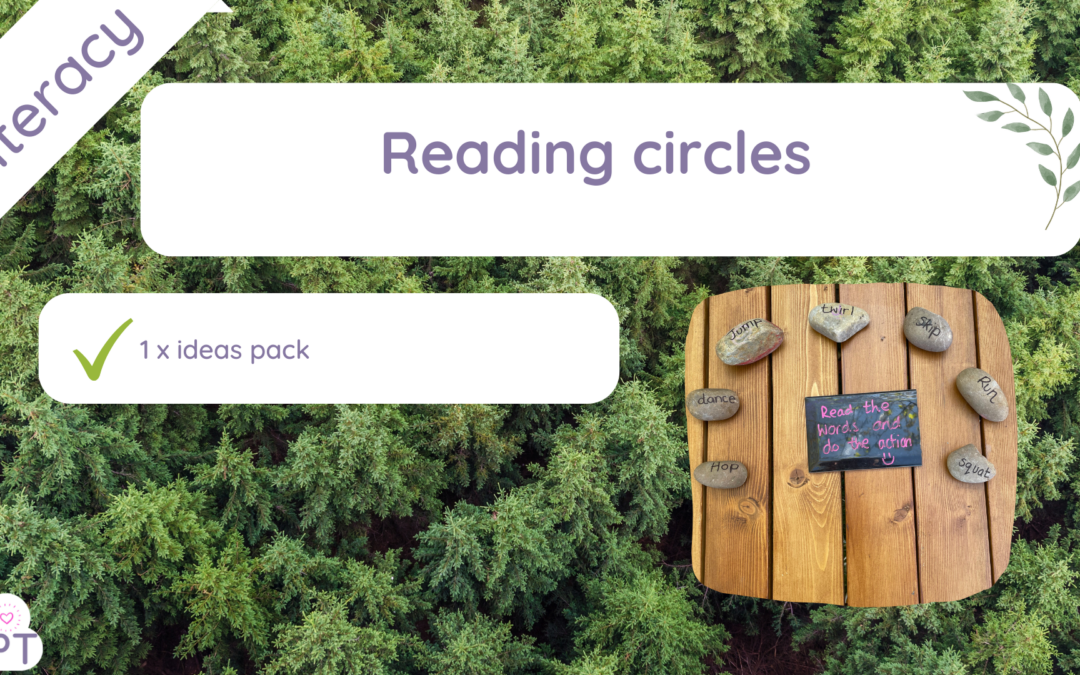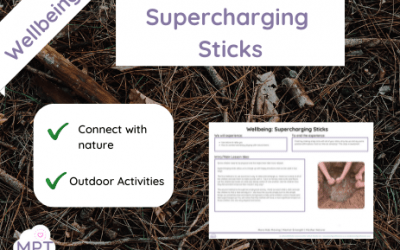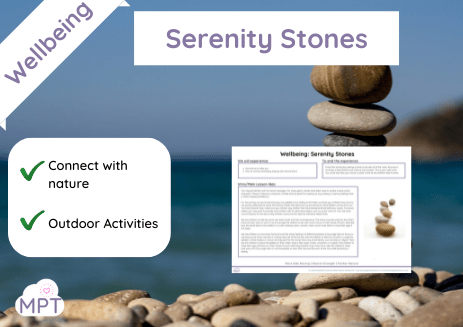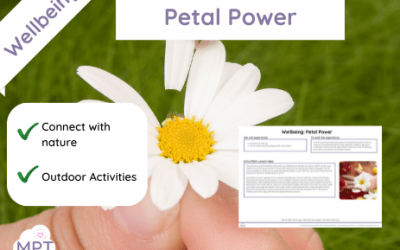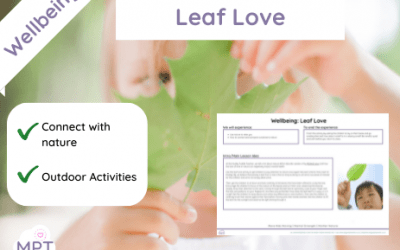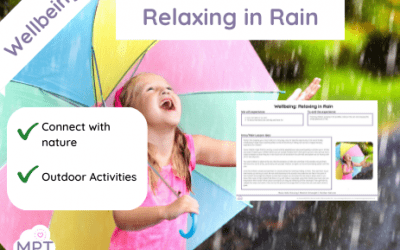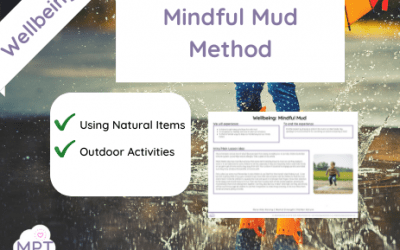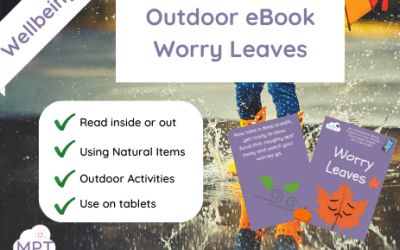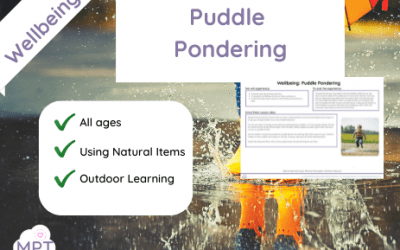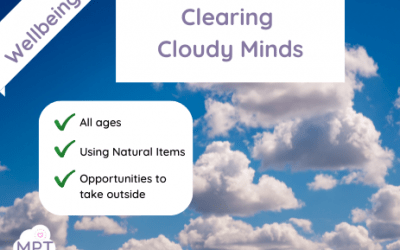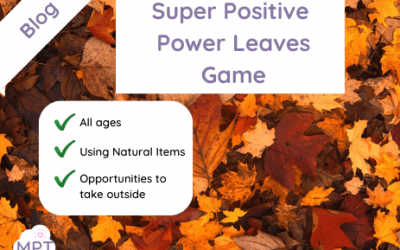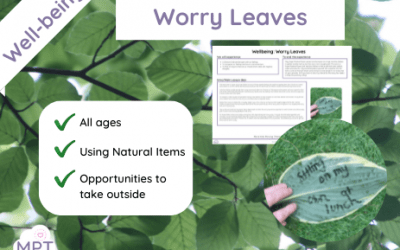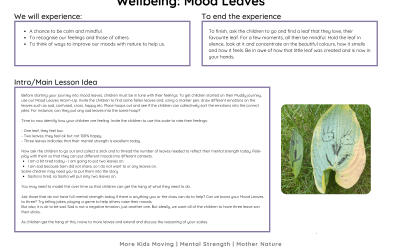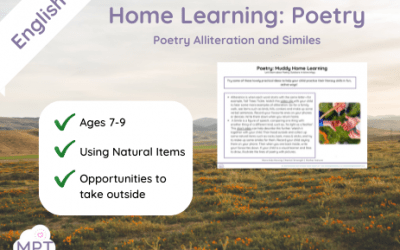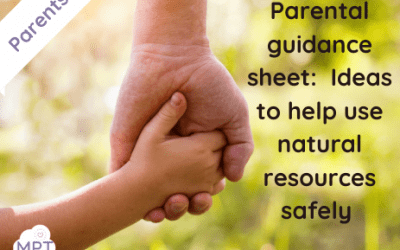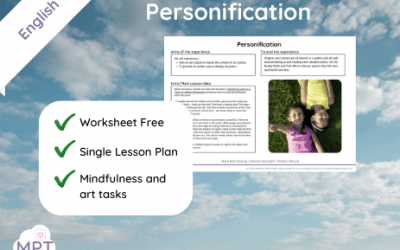Wellbeing: Supercharging Sticks ⇒Use the Supercharging Stick Activities to help active and physical children find a...
Stone Serenity (Wellbeing)
Sep 8, 2021
Wellbeing: Serenity Stones ⇒Use the Serenity Stones to help children use nature to transfer negative energy. A...
Petal Power (Wellbeing)
Sep 8, 2021
Wellbeing: Leaf Love ⇒Use the Petal Power to take you back to your own childhood and use the holistic joys of making...
Leaf Love (Wellbeing)
Sep 8, 2021
Wellbeing: Leaf Love ⇒Use the Leaf Love to help children have a method to help them connect with nature. Connecting to...
Relaxing in the Rain (Wellbeing)
Sep 8, 2021
Wellbeing: Relaxing in the Rain ⇒Use the Relaxing in the Rain lesson plan to make the most of outdoor learning. Do...
Mindful Mud (Wellbeing)
Sep 8, 2021
Wellbeing: Mindful Mud ⇒Use the Mindful Mud method and let mud and mess make you all feed good! ⇒Single Lesson Plan We...
Worry Leaves (Outdoor eBook)
Sep 7, 2021
Worry Leaves ⇒This eBook can be read outdoors in indoors, with tasks to do outdoors after ⇒Single Text We will...
Wellbeing: Puddle Pondering
Sep 2, 2021
Puddle Pondering is a fabulous way to get your sillies out. Being silly is extremely important for children to be...
Wellbeing : Clearing Cloudy Minds
Sep 2, 2021
Clearing cloudy minds and being mindful is imperative in all of our lives. We lead busy, fast-paced lives and...
Super Positive Power Leaves
Sep 1, 2021
Super Positive Power Leaves Play 'Super Positive Power Leaves' and end your lesson on a high. ?Ask the children to...
Well-being: Worry Leaves
Sep 1, 2021
Worry Leaves This lesson plan will cover the following objectives: A chance to talk and be open with our feelings. To...
Well-being: Mood Leaves
Sep 1, 2021
Mood Leaves Use this natural and nurturing lesson plan and let nature help the children to connect with their...
Poetry Alliteration and Similes (Home Learning)
Aug 28, 2021
Home Learning Activity Poetry Alliteration and Similes Use this pack to help your children flourish at home...
Safety while using Natural Resources
Aug 23, 2021
Use Safety while using Natural Resources to help send a useful ideas pack to parents to help them best navigate how...
Personification
Aug 20, 2021
Personification KS2 ⇒This lesson is best achieved outdoors. ⇒ Do it in all weathers ⇒ Uses natural resources ⇒Single...
Celebrating Diwali
Aug 20, 2021
Celebrating Diwali ⇒This lesson is best done outside and involves some messy...
Country Dancing Instructions
Aug 20, 2021
Country Dancing for kids ⇒This lesson can be done outside or in a hall space. ⇒ Do it in all weathers ⇒Single Lesson...
Harvest Festival (Celebrations)
Aug 20, 2021
Harvest Festival (Celebrations) ⇒This lesson is best achieved outdoors. ⇒ Do it in all weathers ⇒ Uses natural...
New In
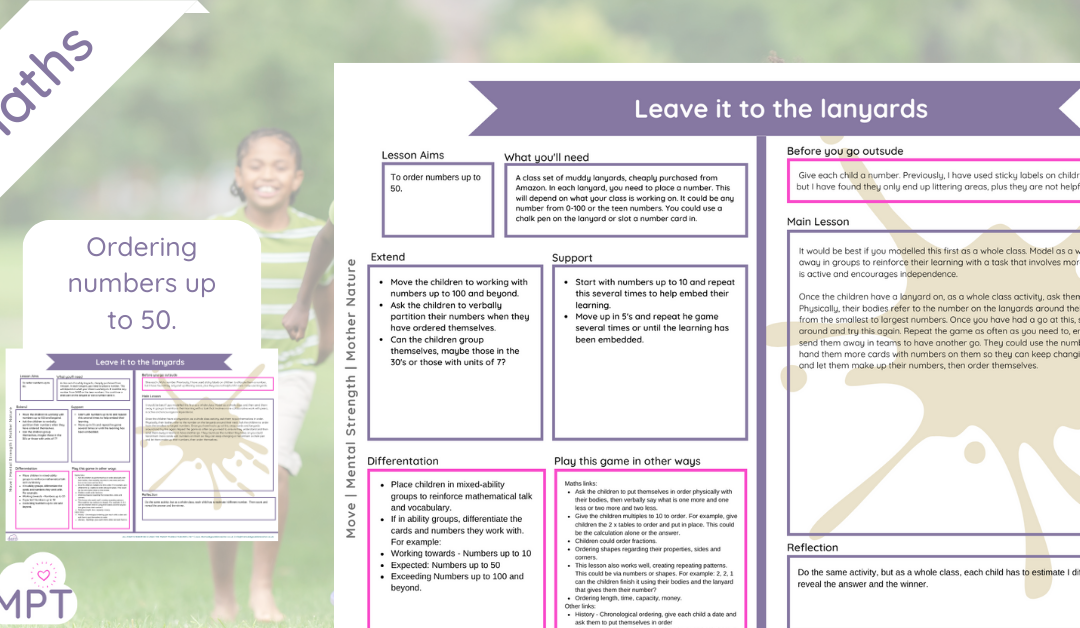
Ordering numbers up to 50 – Leave it to the lanyards
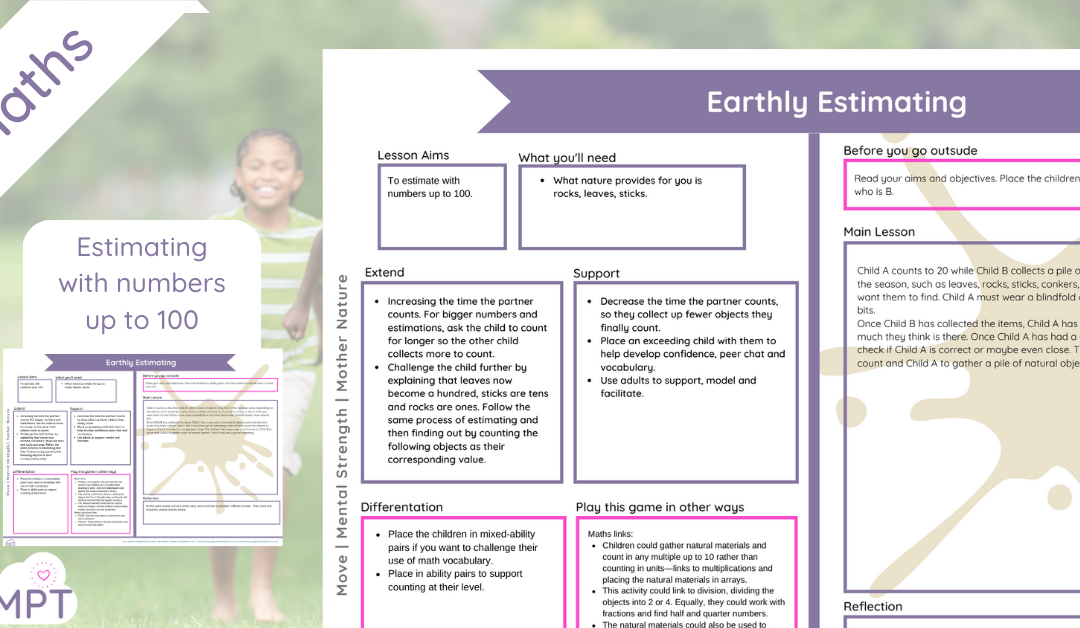
Estimating with numbers up to 100 : Earthly Estimating
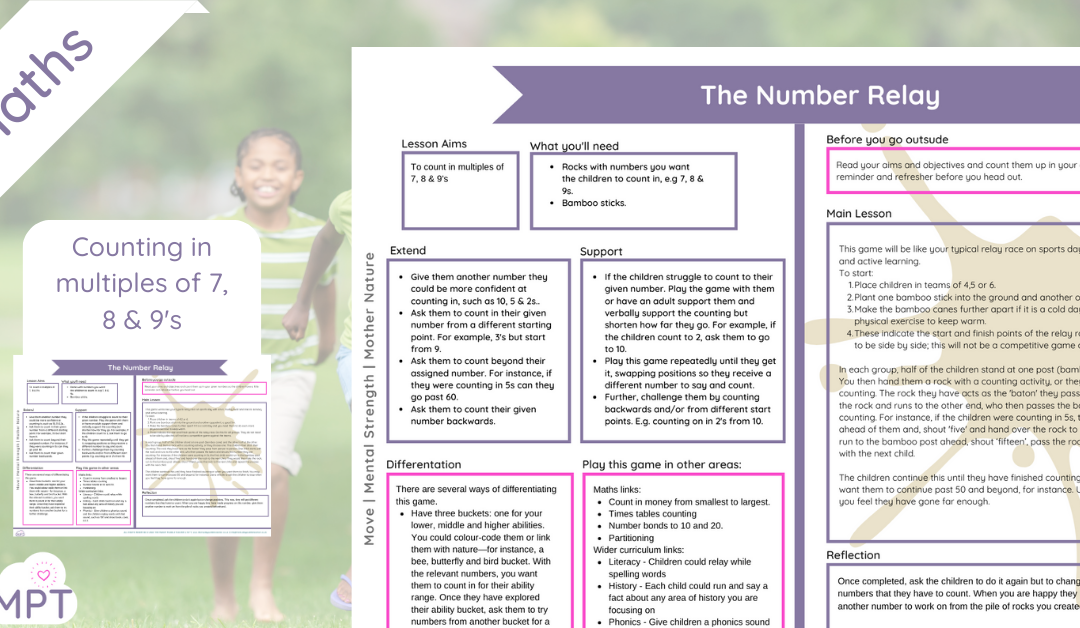
Count in multiples of 7, 8 & 9s : Number Relay
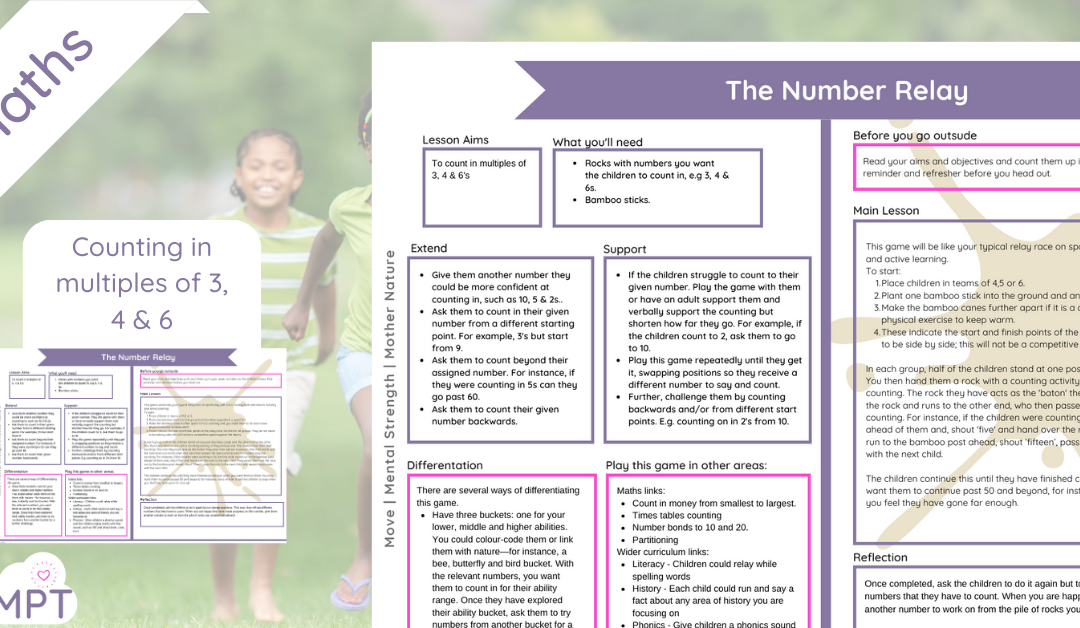
Count in multiples of 3, 4 & 6’s : Number Relay
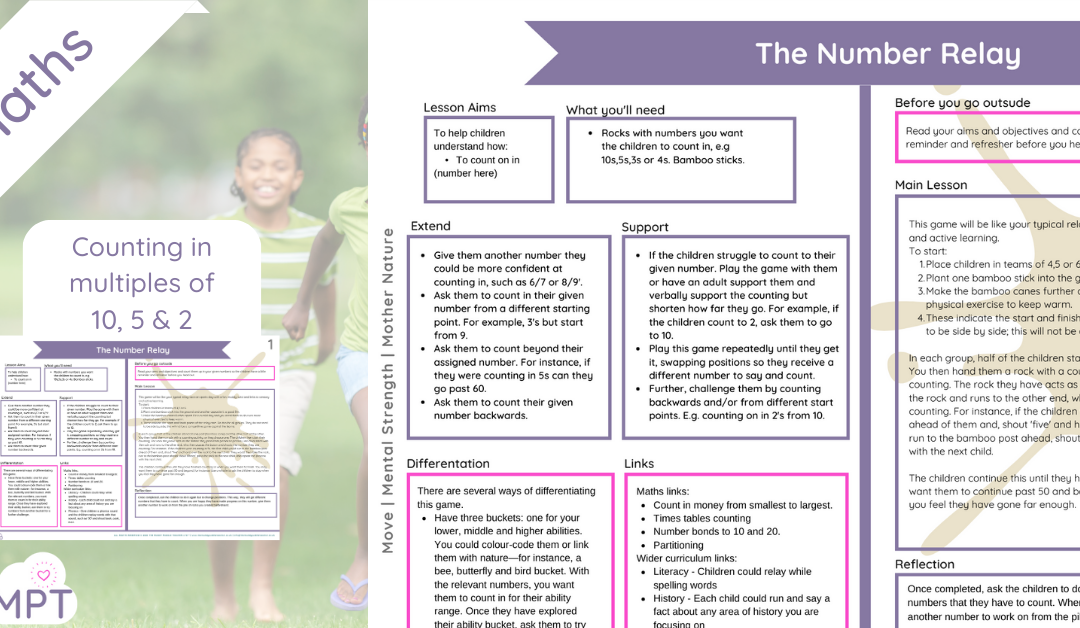
Count in multiples of 10, 5 & 2 : Number Relay
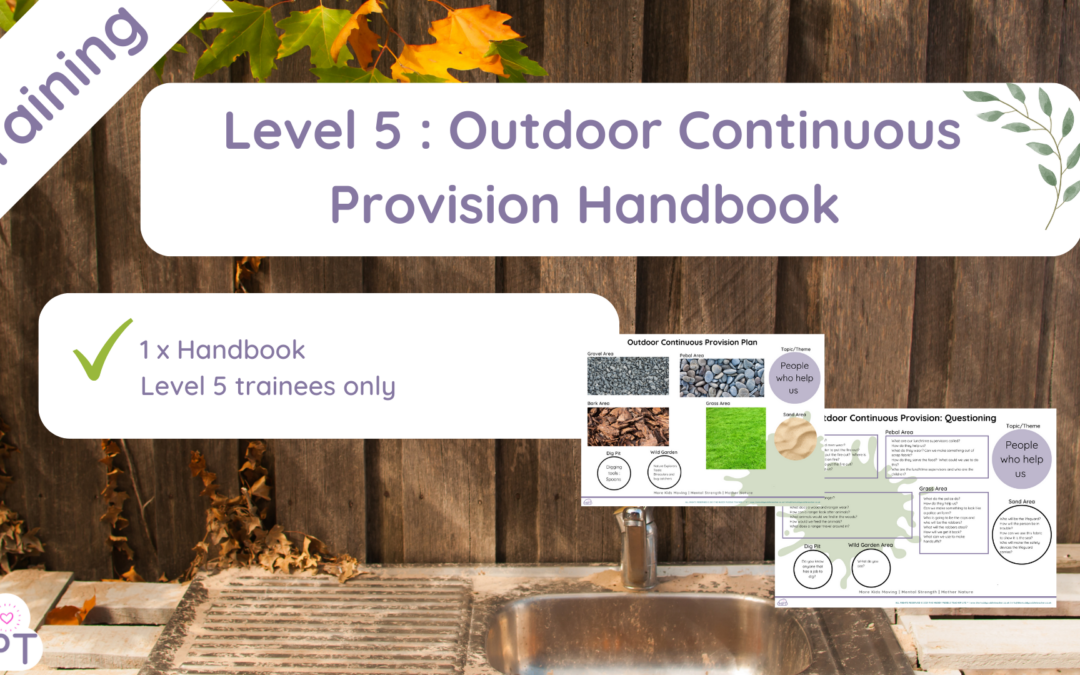
Outdoor Continuous Provision Handbook (Level 5 Trainees only)

Bee Swatch Book
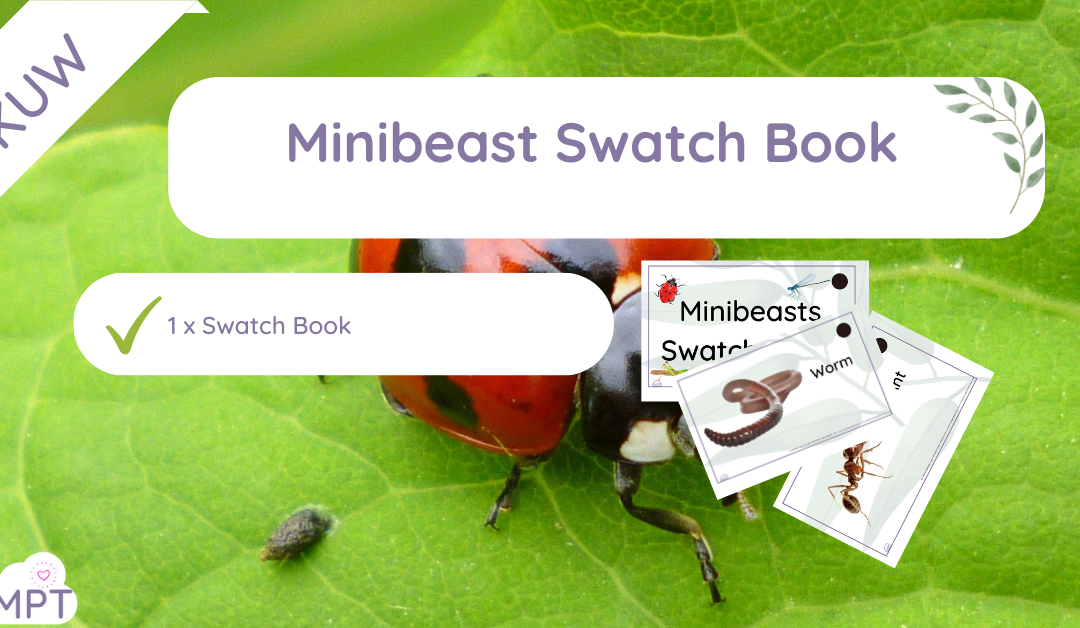
Minibeast Swatch Book

King Charles Silhouettes
